A Review of Building Carbon Emission Accounting Methods under Low-Carbon Building Background
Abstract
1. Introduction
1.1. Background
1.2. Policies for Low-Carbon Building
2. Methodology
2.1. Literature Research
2.2. Bibliometric Analysis
2.2.1. Literature Trends
2.2.2. Quantitative Analysis of the Main Source Journals
2.2.3. Keyword Co-Occurrence Analysis
3. Application Status for Carbon Emission Accounting
3.1. Carbon Emission Accounting Standards
3.1.1. Standard for Product Carbon Footprint Methodology
3.1.2. Standard for Defining Carbon Source Types
- Direct emissions: greenhouse gas emissions from sources directly owned or controlled by a frustrated organization.
- Energy indirect emissions: electricity, steam, etc., used by an organization for production and other activities.
- Energy indirect emissions: electricity, steam, etc., used by a frustrated organization for production and other activities.
3.2. Carbon Emission Accounting Methods
3.2.1. The IPCC Inventory Method
3.2.2. The Input-Output Analysis
- This method calculates CO2 emissions by sector, but there are many different products within the same sector, and the CO2 emissions of these products may vary greatly, so it is easy to generate errors when using the averaging method in the calculation.
- The input-output analysis method yields results that only provide industry data, rather than product-specific data. As a result, it can be utilized to assess the carbon footprint of a sector or industry, but not to calculate the carbon footprint of an individual product.
3.2.3. The Life Cycle Assessment
3.2.4. The Emission Factor Estimation
3.2.5. Comparative Analysis of Carbon Emission Accounting Methods
- Although the literature on carbon emissions research has grown rapidly in recent years, most carbon accounting frameworks are based on the study and citation of ISO standards and IPCC research results prior to 2010, and there is a lack of literature that can deeply and systematically analyze the theory of carbon emission accounting, which results in a lack of innovation in the theory of carbon emission research.
- In terms of carbon emission accounting methods, emission factor estimation combined with life cycle analysis is the most commonly used method nowadays, while the calculation boundary, data selection, and carbon emission coefficients of the process analysis method need to be further explored and improved.
- At present, it is still difficult to apply physical input-output analysis to the accounting of real carbon emissions because of the difficulties in obtaining data, and the next step of the carbon emission research should be combined with the sector/industry, regional and national input-output data.
4. Conclusions
Author Contributions
Funding
Data Availability Statement
Conflicts of Interest
References
- Denning, A.S. Combustion to concentration to warming: What do climate targets mean for emissions? Climate change and the global carbon cycle. Encycl. Anthr. 2018, 1, 443–452. [Google Scholar] [CrossRef]
- IPCC. 2006 IPCC Guidelines for National Greenhouse Gas Inventories; Cambridge University Press: Cambridge, UK, 2006. [Google Scholar]
- UNEP—UN Environment Programme. Building Materials and The Climate: Constructing A New Future. Available online: https://www.unep.org/resources/report/building-materials-and-climate-constructing-new-future (accessed on 12 September 2023).
- Zabalza Bribián, I.; Aranda Usón, A.; Scarpellini, S. Life cycle assessment in buildings: State-of-the-art and simplified lca methodology as a complement for building certification. Build. Environ. 2009, 44, 2510–2520. [Google Scholar] [CrossRef]
- UNEP S BCI. Buildings and Climate Change: A Summary for Decision-Makers. Available online: https://www.unep.org/SBCI/pdfs/SBCI-BCCSummary.pdf (accessed on 9 January 2013).
- The Central People’s Government of the People’s Republic of China. Strengthening Action on Climate Change-China’s National Autonomous Contribution. Available online: http://www.gov.cn/xinwen/2015-06/30/content_2887330.htm (accessed on 30 June 2015).
- Thormark, C. A low energy building in a life cycle—Its embodied energy, energy need for operation and recycling potential. Build. Environ. 2002, 37, 429–435. [Google Scholar] [CrossRef]
- Yin, S.C. Carbon Accounting for the Whole Life Cycle of Buildings; Harbin Institute of Technology: Harbin, China, 2012. (In Chinese) [Google Scholar]
- ISO 14064-1:2018; Greenhouse Gases—Part 1: Specification with Guidance at the Organization Level for Quantification and Reporting of Greenhouse Gas Emissions and Removals. ISO: Geneva, Switzerland, 2018.
- Chance, T. Towards sustainable residential communities; the Beddington zero energy development (BedZED) and beyond. Environ. Urban. 2009, 21, 527–544. [Google Scholar] [CrossRef]
- McManus, A.; Gaterell, M.R.; Coates, L.E. The potential of the code for sustainable homes to deliver genuine ‘sustainable energy’ in the uk social housing sector. Energy Policy 2010, 38, 2013–2019. [Google Scholar] [CrossRef]
- Lockwood, M. The political sustainability of climate policy: The case of the UK climate change act. Glob. Environ. Chang. 2013, 23, 1339–1348. [Google Scholar] [CrossRef]
- Clarke, J.; Littlewood, J.R.; Karani, G. Developing tools to enable the UK construction industry to adopt the active building concept for net zero carbon buildings. Buildings 2023, 13, 304. [Google Scholar] [CrossRef]
- Martiskainen, M.; Kivimaa, P. Creating innovative zero carbon homes in the United Kingdom—Intermediaries and champions in building projects. Environ. Innov. Soc. Transit. 2018, 26, 15–31. [Google Scholar] [CrossRef]
- Heat and Buildings Strategy in United Kindom. Available online: https://www.gov.uk/government/publications/heat-and-buildings-strategy (accessed on 19 October 2021).
- 2021 Global Status Report for Buildings and Construction. Available online: https://www.nypassivehouse.org/2021-global-status-report-for-buildings-and-construction/ (accessed on 20 October 2021).
- Planning for Federal Sustainability in the Next Decade in United States of America. Available online: https://www.govinfo.gov/content/pkg/FR-2015-03-25/pdf/2015-07016.pdf (accessed on 16 July 2015).
- Measurement Science Roadmap for Net-Zero Energy Buildings Workshop Summary Report. Available online: https://www.govinfo.gov/content/pkg/GOVPUB-C13-552f71735710557499a02208ec0277b8/pdf/GOVPUB-C13-552f71735710557499a02208ec0277b8.pdf (accessed on 17 March 2010).
- Sovacool, B.K.; Blyth, P.L. Energy and environmental attitudes in the green state of denmark: Implications for energy democracy, low carbon transitions, and energy literacy. Environ. Sci. Policy 2015, 54, 304–315. [Google Scholar] [CrossRef]
- Zhang, M.G.; Wu, Q.W. Heat pumps in Denmark: Current situation in providing frequency control ancillary services. J. Power Energy Syst. 2022, 8, 769–779. [Google Scholar] [CrossRef]
- Buildings’ Energy Needs. Calculation Guide; Danish Building Research Institute Publishing: Aarhus, Denmark, 2018. (In Danish) [Google Scholar]
- Kiviste, M.; Musakka, S.; Ruus, A.; Vinha, J. A review of non-residential building renovation and improvement of energy efficiency: Office buildings in Finland, Sweden, Norway, Denmark, and Germany. Energies 2023, 16, 4220. [Google Scholar] [CrossRef]
- Lee, C.M.; Erickson, P. How does local economic development in cities affect global GHG emissions? Sustain. Cities Soc. 2017, 35, 626–636. [Google Scholar] [CrossRef]
- EPBD. Implementation in Denmark Status in December. 2016. Available online: http://epbd-ca.eu/wp-content/uploads/2018/08/CA-EPBD-IV-Denmark-2018.pdf (accessed on 2 May 2019).
- Suzuki, M.; Oka, T.; Okada, K. The estimation of energy consumption and co2 emission due to housing construction in Japan. Energy Build. 1995, 22, 165–169. [Google Scholar] [CrossRef]
- Lu, X.C. Experience and inspiration of low-carbon technology innovation in Japan. Enterp. Manag. 2021, 6, 15–19. (In Chinese) [Google Scholar] [CrossRef]
- Li, H.; Zhang, S.; Okumiya, M.; Yoon, G. Japan zero energy building development status. Build. Sci. 2017, 33, 142–148. [Google Scholar] [CrossRef]
- Plan for Global Warming Countermeasures, Ministry of the Environment in Japan. Available online: https://www.env.go.jp/press/110060.html (accessed on 22 October 2021).
- Bühler, D.; Schuetze, T.; Junge, R. Towards development of a label for zero emission buildings: A tool to evaluate potential zero emission buildings. Sustainability 2015, 7, 5071. [Google Scholar] [CrossRef]
- Pervez, H.; Ali, Y.; Petrillo, A. A quantitative assessment of greenhouse gas (GHG) emissions from conventional and modular construction: A case of developing country. J. Clean. Prod. 2021, 294, 126210. [Google Scholar] [CrossRef]
- An, M.; Liu, M.F.; Wu, H.L. Study on the influence of prefabricated building demonstration city policy on carbon emission in the construction industry. Acta Sci. Circumstantiae 2023, 464–476. (In Chinese) [Google Scholar] [CrossRef]
- Huang, H.; Cheng, F.; Su, Y.; Yao, L.; Hu, J. Energy-saving potential analysis and countermeasures for carbon peaking in China. Chin. J. Eng. Sci. 2021, 23, 81–91. [Google Scholar] [CrossRef]
- IEA-EBC Annex 82-Energy Flexible Buildings Towards Resilient Low Carbon Energy Systems. Available online: https://annex82.iea-ebc.org (accessed on 17 May 2023).
- HM Treasury, Infrastructure UK, Department for Business. Infrastructure Carbon Review. Available online: https://assets.publishing.service.gov.uk/government/uploads/system/uploads/attachment_data/file/260710/infrastructure_carbon_review_251113.pdf (accessed on 25 May 2013).
- Li, Y.; Li, S.; Xia, S.; Li, B.; Zhang, X.; Wang, B.; Ye, T.; Zheng, W. A Review on the policy, technology and evaluation method of low-carbon buildings and communities. Energies 2023, 16, 1773. [Google Scholar] [CrossRef]
- Liu, Z.; Xu, Z.; Zhu, X.; Yin, L.; Yin, Z.; Li, X.; Zheng, W. Calculation of carbon emissions in wastewater treatment and its neutralization measures: A review. Sci. Total Environ. 2023, 912, 169356. [Google Scholar] [CrossRef]
- Liao, L.; Quan, L.; Yang, C.; Li, L. Knowledge Synthesis of intelligent decision techniques applications in the AECO Industry. Autom. Constr. 2022, 140, 104304. [Google Scholar] [CrossRef]
- Akram, R.; Thaheem, M.J.; Nasir, A.R.; Ali, T.H.; Khan, S. Exploring the role of building information modeling in construction safety through science mapping. Saf. Sci. 2019, 120, 456–470. [Google Scholar] [CrossRef]
- Van Eck, N.J.; Waltman, L. Software Survey: VOSviewer, a Computer program for bibliometric mapping. Scientometrics 2010, 84, 523–538. [Google Scholar] [CrossRef]
- Yevu, S.K.; Owusu, E.K.; Chan, A.P.C.; Sepasgozar, S.M.E.; Kamat, V.R. Digital twin-enabled prefabrication supply chain for smart construction and carbon emissions evaluation in building projects. J. Build. Eng. 2023, 78, 107598. [Google Scholar] [CrossRef]
- PAS 2050:2008; Specification for the Assessment of the Life Cycle Greenhouse Gas Emissions of Goods and Services. BSI: London, UK, 2008.
- Yi, L.; Li, C.P.; Wang, X.C. Research on the carbon management pattern of chinese enterprises—Based on the establishment of the national carbon market. Sci. Technol. Manag. Res. J. 2016, 11, 247–253. (In Chinese) [Google Scholar] [CrossRef]
- Whittaker, C.; McManus, M.C.; Hammond, G.P. Greenhouse gas reporting for biofuels: A comparison between the RED, RTFO and PAS 2050 Methodologies. Energy Policy 2011, 39, 5950–5960. [Google Scholar] [CrossRef]
- PAS 2050; How to Assess the Carbon Footprint of Goods and Services. BSI (British Standards Institute): London, UK, 2008.
- PAS 2050:2011; Specification for the Assessment of the Life Cycle Greenhouse Gas Emissions of Goods and Services. BSI (British Standards Institution): London, UK, 2015.
- Sinden, G. The contribution of PAS 2050 to the evolution of international greenhouse gas emission standards. Int. J. Life Cycle Assess. 2009, 14, 195–203. [Google Scholar] [CrossRef]
- Liang, Z.; Deng, H.; Xie, H.; Chen, B.; Sun, M.; Wang, Y. Rethinking the paper product carbon footprint accounting standard from a life-cycle perspective. J. Clean. Prod. 2023, 393, 136352. [Google Scholar] [CrossRef]
- Zhang, Y.; Xia, S.; Yang, F. Research on carbon emission measurement method based on carbon emission reduction of power grid supply chain. In Proceedings of the 2022 Asian Conference on Frontiers of Power and Energy (ACFPE), Chengdu, China, 21–23 October 2022; pp. 298–302. (In Chinese). [Google Scholar]
- Matthews, H.S.; Hendrickson, C.; Weber, C. The importance of carbon footprint estimation boundaries. Environ. Sci. Technol. 2008, 42, 5839–5842. [Google Scholar] [CrossRef]
- IPCC. Good Practice Guidance and Uncertainty Management in National Greenhouse Gas Inventories; IGES: Hayama, Japan, 2000; pp. 1–15. [Google Scholar]
- Gitarskiy, M.L. The refinement to the 2006 IPCC guidelines for national greenhouse gas inventories. Appl. Climatol. 2019, 2, 5–13. [Google Scholar] [CrossRef]
- Liang, Y.M.; Jin, S.P.; Zeng, Z.D.; Li, Y.; Jin, Y.H.; Long, Y. The research of greenhouse gas emission inventories for energy activities in china based on IPCC guidelines—From district level to national level. New Energy Sustain. Dev. 2016, 531–540. [Google Scholar] [CrossRef]
- Zhu, S.L.; Wang, W.T. Development of National Greenhouse Gas Emissions Inventories in the Context of International Climate Negotiations,” Advances in Climate Change Research. Adv. Clim. Chang. Res. 2013, 4, 60–68. [Google Scholar] [CrossRef]
- Kaur, R.; Patsavellas, J.; Haddad, Y.; Salonitis, K. The concept of carbon accounting in manufacturing systems and supply chains. Energies 2021, 17, 10. [Google Scholar] [CrossRef]
- Liu, Q.H. Estimation of Direct Nitrous Oxide Emissions from Paddy Fields and Vegetable Fields in China Based on IPCC Emission Factor Methodology; Nanjing Agricultural University: Nanjing, China, 2017. (In Chinese) [Google Scholar]
- Zhang, L.M.; Ren, J.; Lv, M.Y.; Wang, X.N.; Mao, H. Technical research on estimating forest vegetation carbon storage based on IPCC method. Shanxi Agric. Econ. 2019, 33, 77–79. (In Chinese) [Google Scholar] [CrossRef]
- Shu, Y.; Guo, J.Y.; Zhou, M.; Guan, L.J.; Zhang, J.Q. Research on carbon measurement parameters of Xing’an larch plantation forest in Daxing’anling based on IPCC method. Temp. For. Res. 2022, 5, 30–35. (In Chinese) [Google Scholar] [CrossRef]
- Zhang, L. Carbon Storage Value and Carbon Density Analysis of Arbor Forest in Genhe Forestry Bureau. Master’s Thesis, Inner Mongolia Agricultural University, Hohhot, China, 2021. (In Chinese). [Google Scholar]
- Sperow, M. Updated Potential Soil Carbon Sequestration Rates on U.S. Agricultural Land Based on the 2019 IPCC Guidelines. Soil Tillage Res. 2020, 204, 104719. [Google Scholar] [CrossRef]
- Leontief, W.W. The Structure of American Economy; IASP Publishing: New York, NY, USA, 1941; pp. 1919–1929. [Google Scholar]
- Leontief, W.W. Studies in Structure of the American Economy; Oxford University Press: London, UK, 1953; ISBN 9780195006186. [Google Scholar]
- Leontief, W.W. Structure of the American Economy, 1919–1939: An Empirical Application of Equilibrium Analysis, 2nd ed.; Oxford University Press: London, UK, 1951; ISBN 9780196 311265. [Google Scholar]
- Chen, S.; Zhang, R.; Li, P.; Li, A. How to improve the performance of china’s energy-transport-economy-environment system: An analysis based on new strategy parallel-series input-output data envelopment analysis models. Energy 2023, 281, 128235. [Google Scholar] [CrossRef]
- Dong, H.J.; Geng, Y. A study on the carbon footprint of Beijing residents’ consumption based on input-output analysis. Resour. Sci. 2012, 34, 494–501. (In Chinese) [Google Scholar]
- Zhang, Z.H.; Liu, R.J. Carbon emission accounting for the construction industry based on input-product analysis. J. Tsinghua Univ. Nat. Sci. Ed. 2013, 53, 53–57. [Google Scholar] [CrossRef]
- Yang, B.X.; Jiang, T.; Liu, X.Q. Carbon emission accounting of china’s paper industry based on the input-output analyses. China Paper 2023, 42, 120–125. (In Chinese) [Google Scholar] [CrossRef]
- Nässén, J.; Holmberg, J.; Wadeskog, A.; Nyman, M. Direct and indirect energy use and carbon emissions in the production phase of buildings: An input–output analysis. Energy 2007, 32, 1593–1602. [Google Scholar] [CrossRef]
- Chau, C.K.; Leung, T.M.; Ng, W.Y. A review on life cycle assessment, life cycle energy assessment and life cycle carbon emissions assessment on buildings. Appl. Energy 2015, 143, 395–431. [Google Scholar] [CrossRef]
- Zawartka, P.; Burchart-Korol, D.; Blaut, A. model of carbon footprint assessment for the life cycle of the system of wastewater collection, transport and treatment. Sci. Rep. 2020, 10, 5799. [Google Scholar] [CrossRef]
- Borjeson, L.; Hojer, M.; Dreborg, K.H.; Ekvall, T.; Finnveden, G. Scenario types and techniques: Towards a user’s guide. Futures 2006, 38, 723–739. [Google Scholar] [CrossRef]
- Zhang, Y.M.; Guo, X.J.; Zhou, J.J.; Bai, L.B. Research on life cycle carbon footprint evaluation of assembled buildings—Take a residential building in Shaanxi province as an example. Proj. Manag. Technol. 2023, 21, 167–173. (In Chinese) [Google Scholar]
- Luo, L.; Chen, Y. Carbon emission energy management analysis of LCA-based fabricated building construction. Sustain. Comput. Inform. Syst. 2020, 27, 100405. [Google Scholar] [CrossRef]
- Cheng, X.C. Research on analyzing carbon emission of building superstructure based on life cycle approach. China Build. Decor. Renov. 2023, 1, 90–93. (In Chinese) [Google Scholar] [CrossRef]
- Arbulu, M.; Oregi, X.; Etxepare, L. Environmental and economic optimization and prioritization tool-kit for residential building renovation strategies with life cycle approach. Build. Environ. 2023, 228, 109813. [Google Scholar] [CrossRef]
- Rey-Álvarez, B.; Silvestre, J.; García-Martínez, A.; Sánchez-Montañés, B. A comparative approach to evaluate the toxicity of building materials through life cycle assessment. Sci. Total Environ. 2023, 912, 168897. [Google Scholar] [CrossRef]
- Apostolopoulos, V.; Mamounakis, I.; Seitaridis, A.; Tagkoulis, N.; Kourkoumpas, D.-S.; Iliadis, P.; Angelakoglou, K.; Nikolopoulos, N. An integrated life cycle assessment and life cycle costing approach towards sustainable building renovation via a dynamic online tool. Appl. Energy 2023, 334, 120710. [Google Scholar] [CrossRef]
- Monahan, J.; Powell, J.C. An Embodied Carbon and Energy Analysis of Modern Methods of Construction in Housing: A Case Study Using a Lifecycle Assessment Framework. Energy Build. 2011, 43, 179–188. [Google Scholar] [CrossRef]
- Norouzi, M.; Haddad, A.N.; Jiménez, L.; Hoseinzadeh, S.; Boer, D. Carbon footprint of low-energy buildings in the United Kingdom: Effects of mitigating technological pathways and decarbonization strategies. Sci. Total Environ. 2023, 882, 163490. [Google Scholar] [CrossRef] [PubMed]
- Mondello, G.; Salomone, R. Assessing Green processes through life cycle assessment and other LCA-related methods. In Studies in Surface Science and Catalysis; Elsevier: Amsterdam, The Netherlands, 2020; pp. 159–185. ISBN 9780444643377. [Google Scholar]
- Wang, Z.; Zhou, K.; Fan, J.; Zhao, H. Progress of research on energy-related carbon emission accounting methods at the prefectural and county levels. Prog. Geogr. 2023, 42, 1406–1419. [Google Scholar] [CrossRef]
- Johnson, T.E.; Butcher, J.B.; Parker, A.; Weaver, C.P. Investigating the sensitivity of U.S. streamflow and water quality to climate change: U.S. epa global change research program’s 20 watersheds project. J. Water Resour. Plan. Manag. 2012, 138, 453–464. [Google Scholar] [CrossRef]
- Han, Y.H.; Yu, Z.; Chen, T. Measurement and analysis of carbon emission of assembled buildings with different assembly rates based on carbon emission factor method. Build. Struct. 2023, 53, 1337–1342. (In Chinese) [Google Scholar] [CrossRef]
- Lv, L.T.; Wang, L.; Li, J. A Study on Carbon Audit of Large Commercial Buildings. Environ. Eng. 2014, 10, 142–144. (In Chinese) [Google Scholar] [CrossRef]
- Ju, Y.; Chen, Y. Calculation of carbon emissions in the operation phase of buildings—A study of carbon emission factor method based on carbon emission factors. Sichuan Res. Build. Sci. 2015, 41, 175–179. (In Chinese) [Google Scholar] [CrossRef]
- Gao, Y.X. Carbon Footprint Evaluation Methodology and Empirical Research in the Physicalization Phase of Building Products; Tsinghua University: Beijing, China, 2012. (In Chinese) [Google Scholar]
- Zhang, Y.; Peng, T.; Yuan, C.; Ping, Y. Assessment of carbon emissions at the logistics and transportation stage of prefabricated buildings. Appl. Sci. 2023, 13, 552. [Google Scholar] [CrossRef]
- Yu, L.; Wang, Y.; Li, D. Calculating and analyzing carbon emission factors of prefabricated components. Sustainability 2023, 15, 8706. [Google Scholar] [CrossRef]
- Gao, H.; Wang, X.; Wu, K.; Zheng, Y.; Wang, Q.; Shi, W.; He, M. A review of building carbon emission accounting and prediction models. Buildings 2023, 13, 1617. [Google Scholar] [CrossRef]
- UK Schools Carbon Footprint Scoping Study for Sustainable Development Commission by Global Action Plan; SEI (Stockholm Environment Institute): Stockholm, Sweden, 2006.
- Cheng, S.; Zhou, X.; Zhou, H. Study on Carbon emission measurement in building materialization stage. Sustainability 2023, 15, 5717. [Google Scholar] [CrossRef]

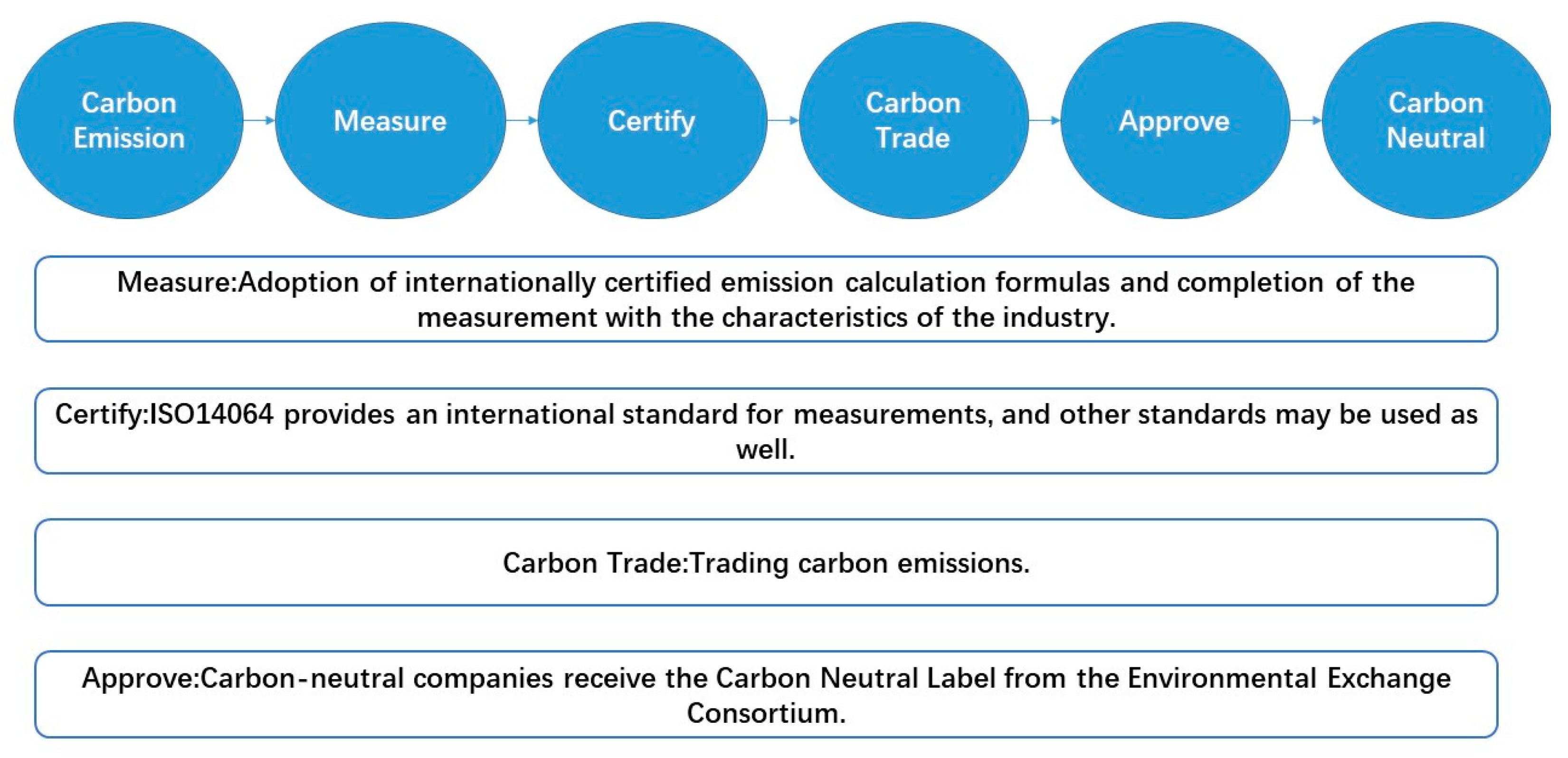
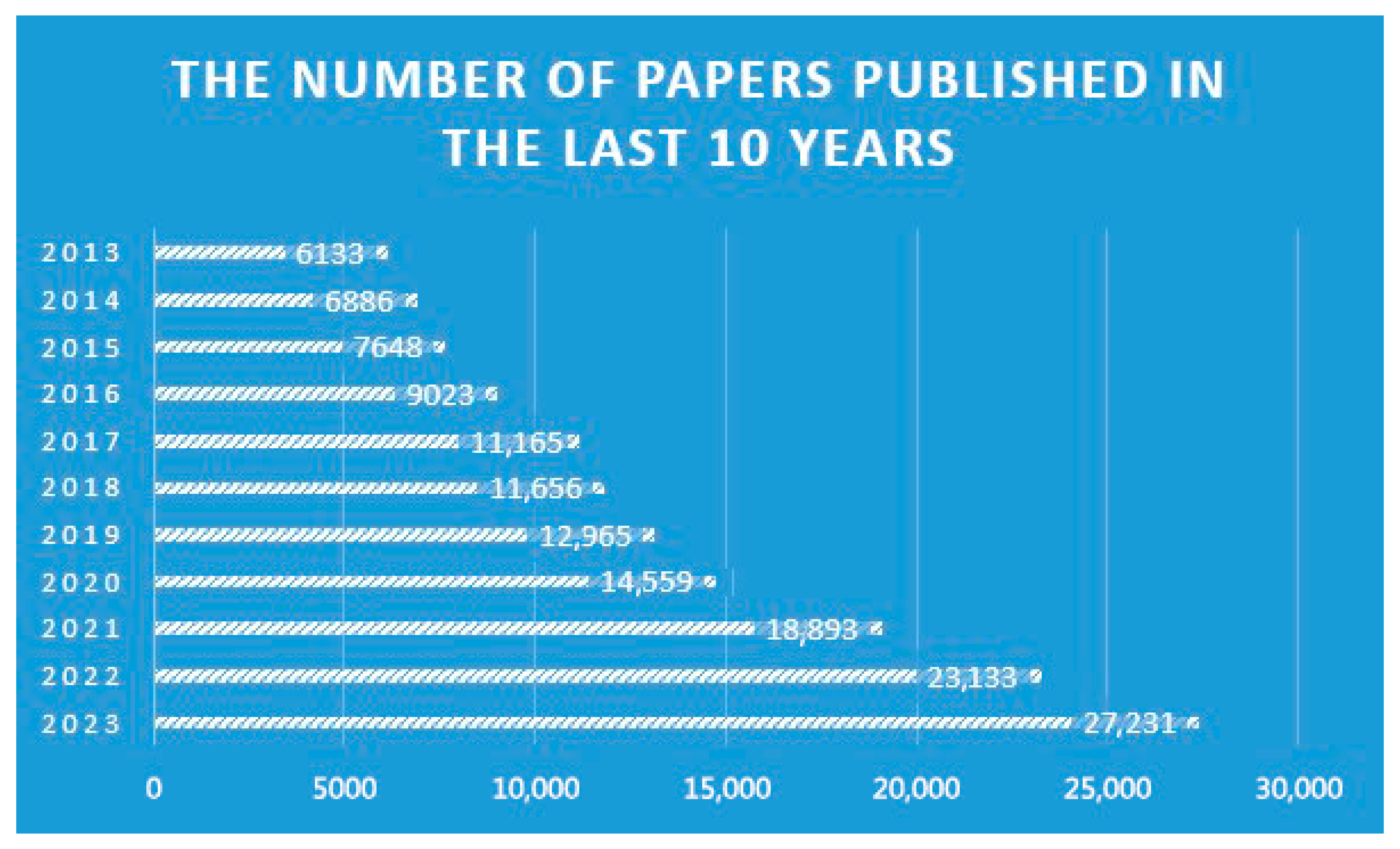
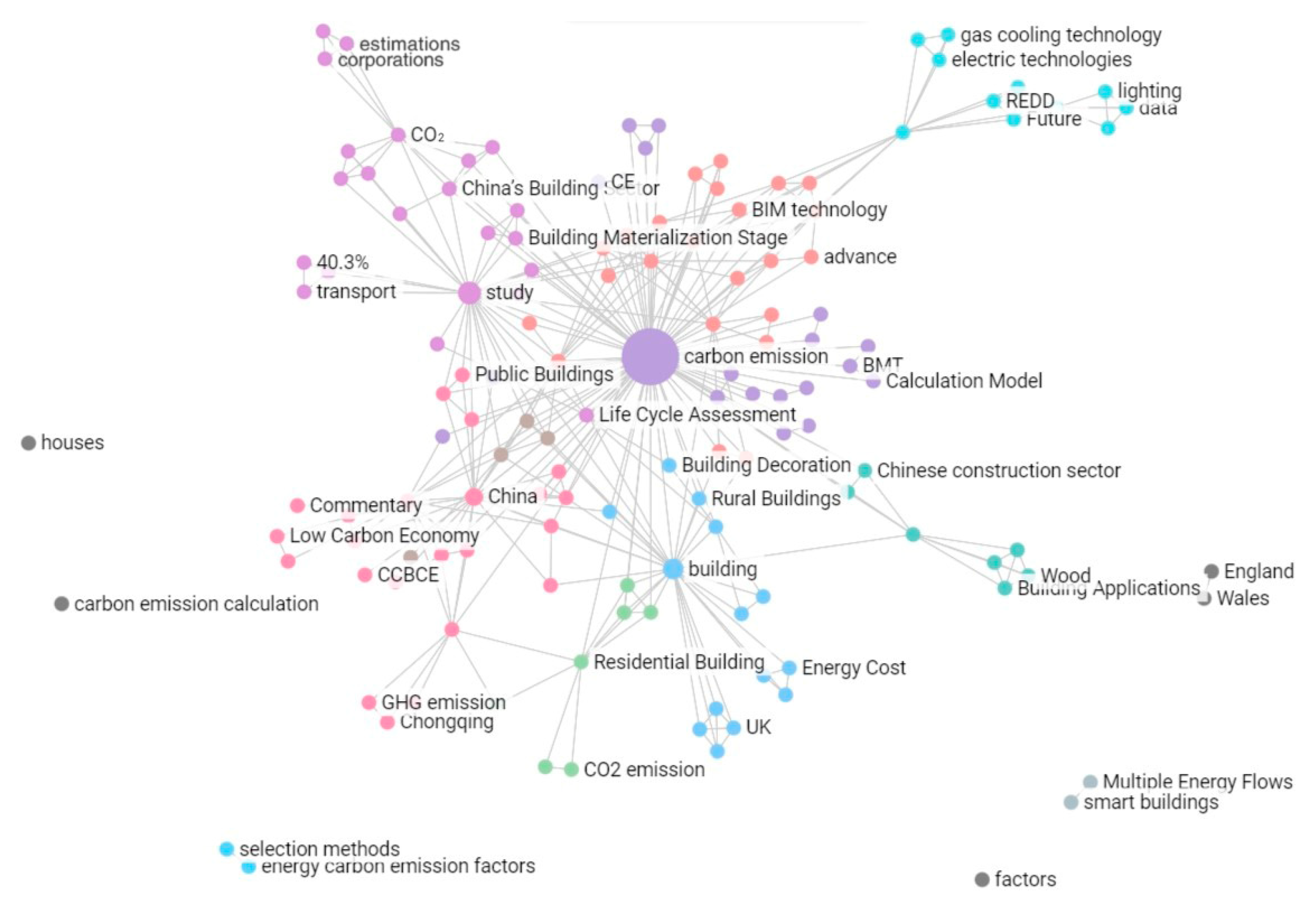

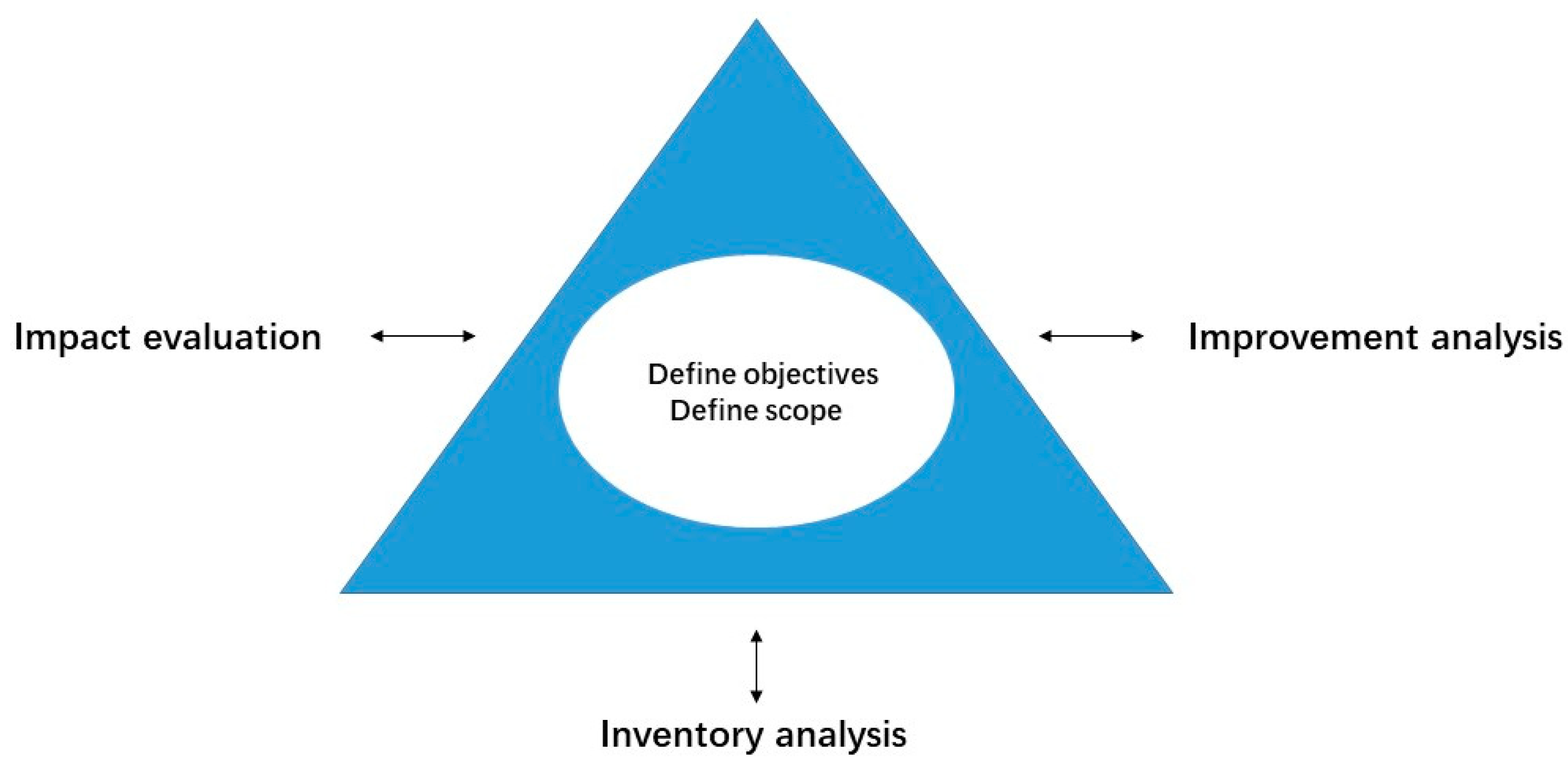
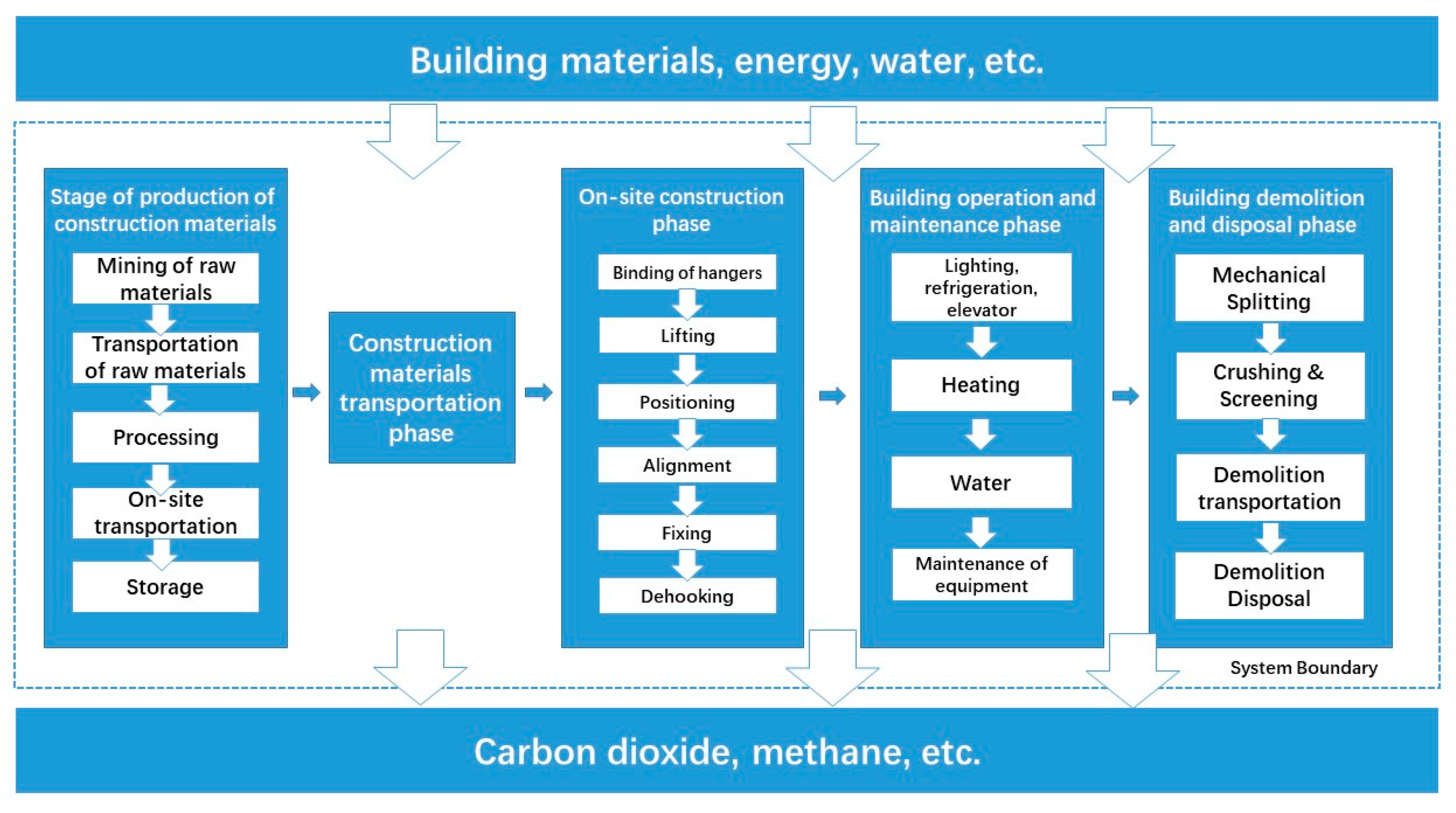
| Country | Police (Year) | Core Objectives |
|---|---|---|
| United Kingdom | Heat and Buildings Strategy (2021) | Reduce greenhouse gas emissions from public places by 75% from 2017 levels by 2037. |
| United States of America | Net-Zero Energy Commercial Building Initiative (2021) | Net zero energy for all public buildings by 2050. |
| Denmark | EPBD Implementation in Denmark | Residential building: 20 kWh/(m2·a) Public building: 25 kWh/(m2·a) |
| Japan | Plan for Global Warming Countermeasures (2021) | All new buildings will consume zero energy on average by 2030. |
| China | “14th Five-Year Plan” for Building Energy Efficiency and Green Building Development (2022) | Promote the development of low-carbon buildings on a large scale and encourage the construction of zero-carbon buildings and near-zero-energy consumption buildings. |
| Rank | Journal | Percentage (%) | IF |
|---|---|---|---|
| 1 | Journal of Cleaner Production | 14.71% | 11.1 |
| 2 | Construction and Building Materials | 9.15% | 7.4 |
| 3 | Renewable and Sustainable Energy Reviews | 6.65% | 15.9 |
| 4 | Science of the Total Environment | 6.37% | 9.8 |
| 5 | Energy | 6.02% | 8.9 |
| 6 | Energy Procedia | 5.66% | \ |
| 7 | Applied Energy | 5.61% | 11.2 |
| 8 | Energy and Buildings | 4.62% | 6.7 |
| 9 | Energy Policy | 4.43% | 9.0 |
| 10 | Journal of Building Engineering | 3.52% | 6.4 |
| Accounting Methods | Field of Application | Advantages | Disadvantages |
|---|---|---|---|
| The IPCC inventory method | Micro and macro levels |
|
|
| The input-output analysis | Macro level |
|
|
| The life cycle assessment | Micro level |
|
|
| The emission factor estimation | Micro and macro levels |
|
|
Disclaimer/Publisher’s Note: The statements, opinions and data contained in all publications are solely those of the individual author(s) and contributor(s) and not of MDPI and/or the editor(s). MDPI and/or the editor(s) disclaim responsibility for any injury to people or property resulting from any ideas, methods, instructions or products referred to in the content. |
© 2024 by the authors. Licensee MDPI, Basel, Switzerland. This article is an open access article distributed under the terms and conditions of the Creative Commons Attribution (CC BY) license (https://creativecommons.org/licenses/by/4.0/).
Share and Cite
Xiong, L.; Wang, M.; Mao, J.; Huang, B. A Review of Building Carbon Emission Accounting Methods under Low-Carbon Building Background. Buildings 2024, 14, 777. https://doi.org/10.3390/buildings14030777
Xiong L, Wang M, Mao J, Huang B. A Review of Building Carbon Emission Accounting Methods under Low-Carbon Building Background. Buildings. 2024; 14(3):777. https://doi.org/10.3390/buildings14030777
Chicago/Turabian StyleXiong, Lun, Manqiu Wang, Jin Mao, and Bo Huang. 2024. "A Review of Building Carbon Emission Accounting Methods under Low-Carbon Building Background" Buildings 14, no. 3: 777. https://doi.org/10.3390/buildings14030777
APA StyleXiong, L., Wang, M., Mao, J., & Huang, B. (2024). A Review of Building Carbon Emission Accounting Methods under Low-Carbon Building Background. Buildings, 14(3), 777. https://doi.org/10.3390/buildings14030777







